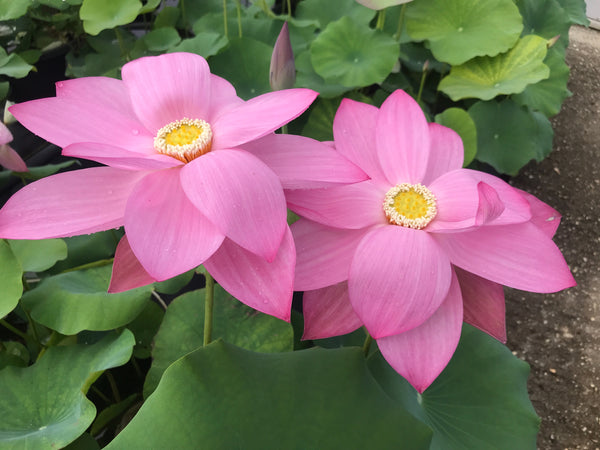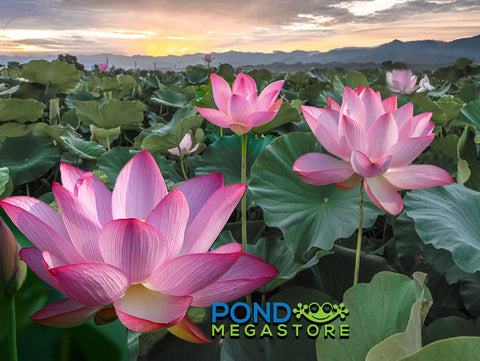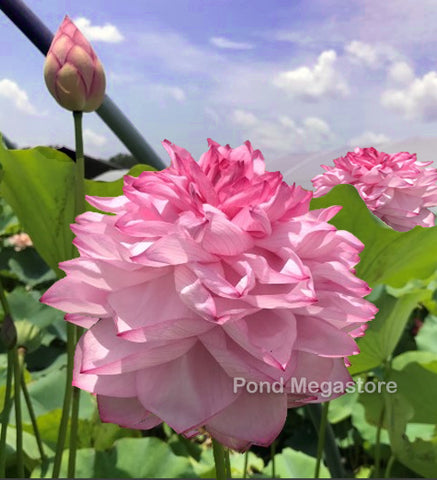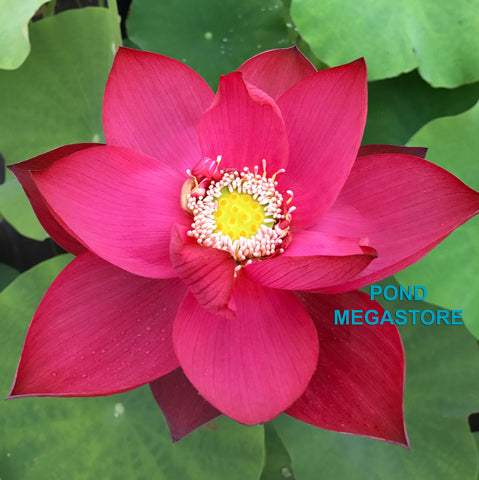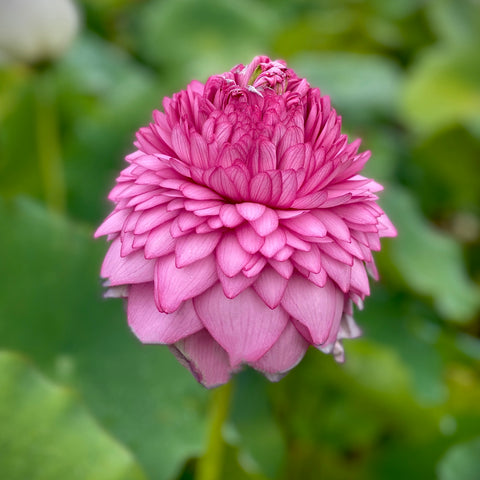Dunhuang Red Lotus Plant Description
Dunhuang Red Lotus is a striking, tall lotus with large, pink, first day blooms that lighten with second and third day flowers. The flowers grow beautifully on this tall variety and there are lots of eye-catching blooms throughout the summer. Dunhuang Red Lotus are named for and native to the city in western China in the Gansu Province near the Gobi Desert. This beautiful lotus adds a dramatic display to your water garden feature when grown in tubs or containers on your deck or patio. Dunhuang Red Lotus grows four feet tall or taller when grown in very wide containers! Tall/Pink/Single-Petal
How to plant your lotus tuber
Plant your lotus tuber in a wide, no holes container (24 - 48 inches wide) or wider. Using loam soil, fill the container 3/4 full. Dig a shallow trench in the surface of the soil with your hand. Gently place the lotus tuber in the trench and cover with an inch of soil, keeping the growth tips exposed. Gently add 4 - 5 inches of water above the soil and place your lotus container in a sunny area outdoors that receives 8 - 12 hours of sunlight daily. In a week or two you should have coin leaves that sit on the surface of the water, in another week or two you should have aerial leaves growing out of the water. Once you have aerial leaves growing out of the water, you may fertilize your lotus. We recommend Waterlily World Fertilizer Tabs for best bloom and optimum growth.
How to fertilize your Dunhuang Red Lotus
Once your lotus has aerial leaves you may fertilize your lotus. For the first dose, we recommend a 1/2 dose of the recommended dosage of your fertilizer. In two weeks you may fertilize your lotus again with the recommended dosage of fertilizer. Feed you lotus once a month throughout the growing/blooming season. Your last dose of fertilizer should be given in early September. This way your lotus will go into dormancy naturally.
Please read our complete guide on Growing Lotus, included with each lotus order!
What Is Loam Soil?
Loam soil is a good mixture of Topsoil and Sand
If you are lucky enough to have good topsoil in your backyard, by all means, use your topsoil. All you will have to do is add fertilizer. If you are not so lucky--and your backyard is sand or heavy red or yellow clay, you can mix up a batch of loam soil.
You can create your own loam soil by mixing these two ingredients together
- 2/3 Inorganic Topsoil (Little or no organic material added)
- 1/3 Pool Filter Sand
Mix together thoroughly with a little water. Your soil should clump when squeezed. If your soil is mixed properly, it will not muddy your pond water.
You can purchase inexpensive bags of inexpensive / poor Topsoil at Lowes or Home-Depot. Good soil clumps together as a ball in your hand with only a little moisture.
Don't buy brands like Scott's or Miracle-Gro, as they will contain too much organic matter that can foul your water. Buy an unbranded bag of topsoil instead.
You can purchase Pool Filter Sand at any store that sells pool supplies.
Loam soil is well suited for all aquatic plants (except oxygenators). Oxygenators rarely need to be planted, just anchored in the substrate or in a container filled with sand or 1/8 inch pea gravel.
Sand holds little water but does allow for aeration and drainage.
Some DO's and DON'TS regarding Aquatic Planting Soil
DO NOT use potting soils ( as they are too light and will float right out of the pot). Potting Soil has organic material that will rot and foul your water!
DO NOT add too much composted material (as it is too rich in organic matter and it will ferment underwater and destroy the ecology of your pond).
DO NOT use 100% calcined clay as there is no nutritional value in calcined clay.
DO NOT add rocks, stones or pebbles to the top of your planting container as this will inhibit the growth of your plants. Plants do not grow in rocks and stones in nature!
DO NOT purchase API Aquatic Planting Media or Microbe-lift Aquatic Planting Media as these products are NOT suitable for waterlilies, lotus or most other pond plants. They are suitable for submerged grasses ONLY!





